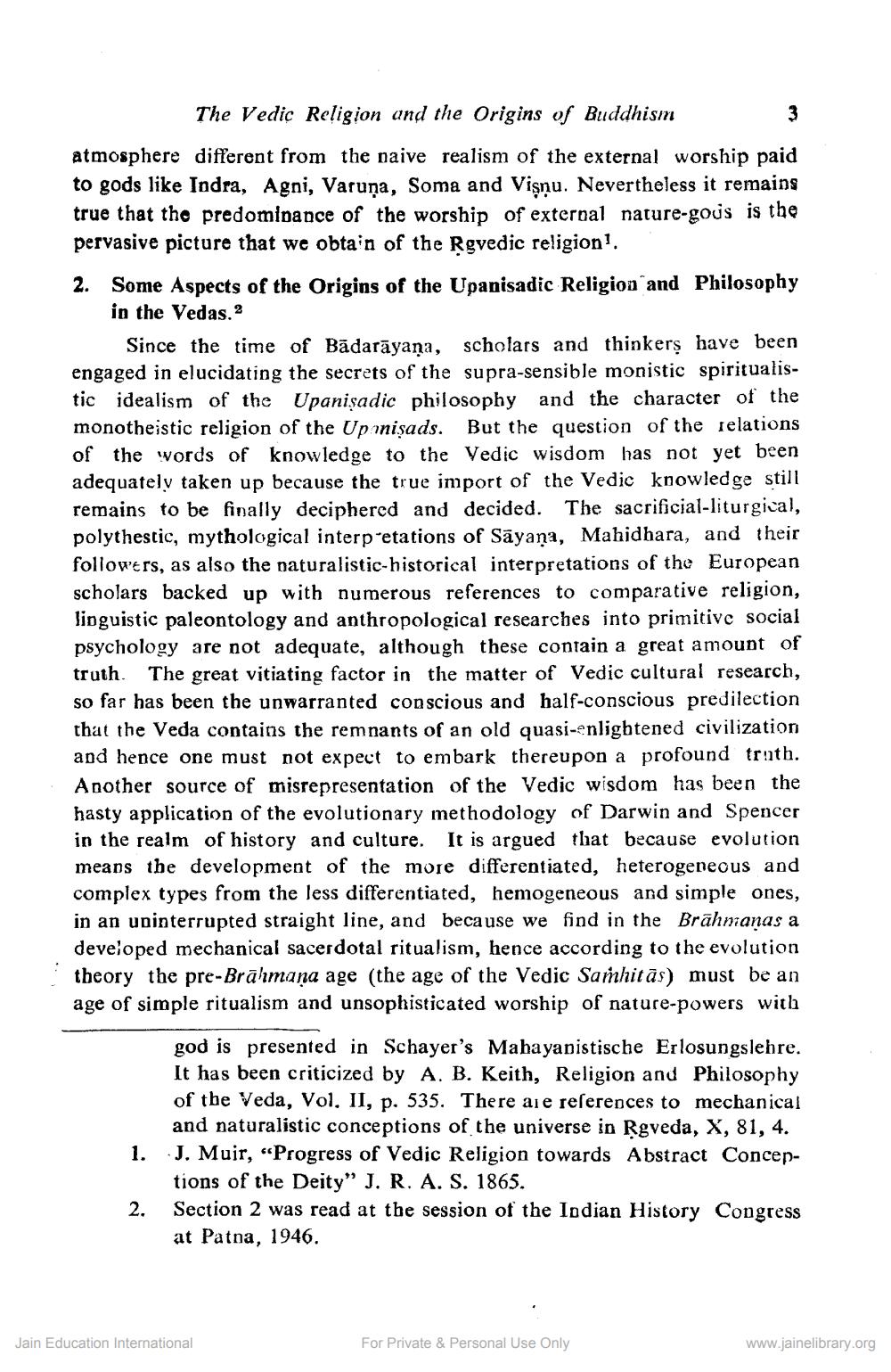________________
The Vedic Religion and the Origins of Buddhism
atmosphere different from the naive realism of the external worship paid to gods like Indra, Agni, Varuna, Soma and Vişnu. Nevertheless it remains true that the predomipance of the worship of external nature-gous is the pervasive picture that we obtain of the Rgvedic religion.
2. Some Aspects of the Origins of the Upanisadic Religion and Philosophy
in the Vedas. 2
Since the time of Bādarāyana, scholars and thinkers have been engaged in elucidating the secrets of the supra-sensible monistic spiritualistic idealism of the Upanisadic philosophy and the character of the monotheistic religion of the Upanisads. But the question of the relations of the words of knowledge to the Vedic wisdom has not yet been adequately taken up because the true import of the Vedic knowledge still remains to be finally deciphered and decided. The sacrificial-liturgical, polythestic, mythological interp'etations of Sāyana, Mahidhara, and their followers, as also the naturalistic-historical interpretations of the European scholars backed up with numerous references to comparative religion, linguistic paleontology and anthropological researches into primitive social psychology are not adequate, although these contain a great amount of truth. The great vitiating factor in the matter of Vedic cultural research, so far has been the unwarranted conscious and half-conscious predilection that the Veda contains the remnants of an old quasi-enlightened civilization and hence one must not expect to embark thereupon a profound truth. Another source of misrepresentation of the Vedic wisdom has been the hasty application of the evolutionary methodology of Darwin and Spencer in the realm of history and culture. It is argued that because evolution means the development of the more differentiated, heterogeneous and complex types from the less differentiated, hemogeneous and simple ones, in an uninterrupted straight line, and because we find in the Brahmanas a developed mechanical sacerdotal ritualism, hence according to the evolution theory the pre-Brāhmaṇa age (the age of the Vedic Saṁhitās) must be an age of simple ritualism and unsophisticated worship of nature-powers with
god is presented in Schayer's Maha yapistische Erlosungslehre. It has been criticized by A. B. Keith, Religion and Philosophy of the Veda, Vol. II, p. 535. There are references to mechanical and naturalistic conceptions of the universe in Rgveda, X, 81, 4. J. Muir, “Progress of Vedic Religion towards Abstract Conceptions of the Deity" J. R. A. S. 1865. Section 2 was read at the session of the Indian History Congress at Patna, 1946.
1.
2.
Jain Education International
For Private & Personal Use Only
www.jainelibrary.org




